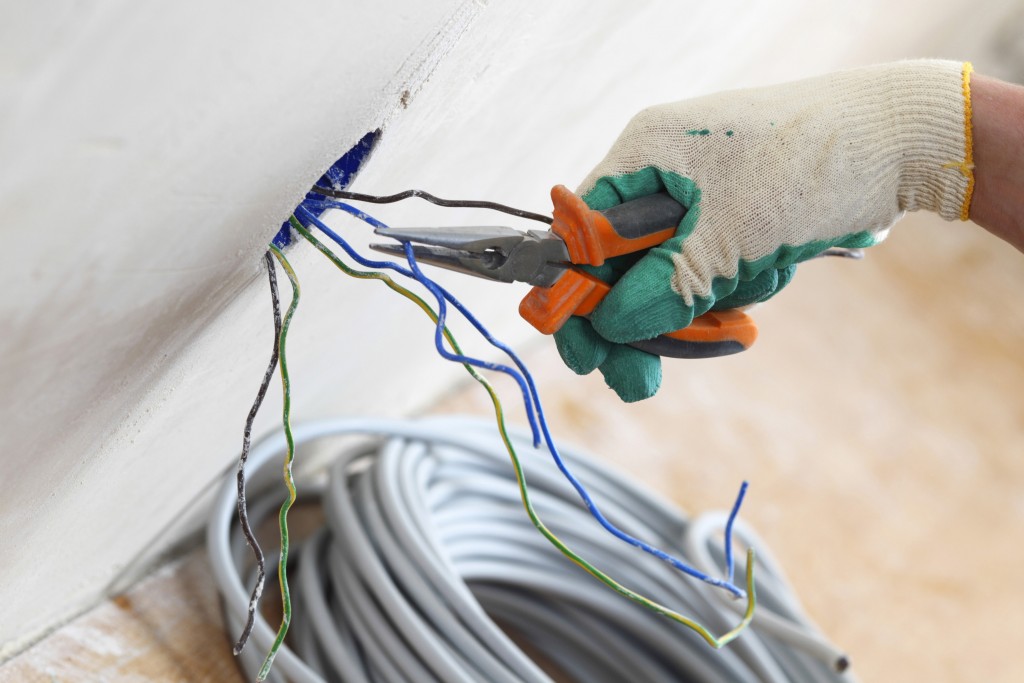In any electrical system that powers your lights, your wall sockets, heating, ventilation, and air-conditioning system, there are different types of electrical wires that are cramped together—each working with different functions.
But if you’re not well-versed when it comes to these things, you may think that they’re all just wires, and you can fix them by turning off your home’s main power switch to be safe.
The truth is most problems with electrical wiring shouldn’t be touched with amateur hands. They can turn lethal, and if you twist or cut the wrong wires, your whole house could get its power cut off. The best course of action is to reach out to professional electricians to help you with your problem.
What if they can’t come as soon as you need them? Then you’d have to at least scramble to find a way to create a temporary fix. Gather information about the perceived problem and see if it’s fixable by an electric novice.
Electrical Wiring Terminologies
Before you can do anything concerning wires, you’d need to know the terms electricians use for the different types of electrical wires. All electrical wires are conductors—meaning they’re materials that allow electricity to flow through them from one side to another.
Conductors used at home are typically made of copper or aluminum, or a combination of the two—copper-sheathed aluminum. They can be either solid metal conductors or stranded wires. Most wires you’ll find within your home’s electrical system are insulated.
If wires are insulated, it means they’re wrapped in a non-conductive plastic coating. At home, you’ll find ground wires insulated with green sheathing or without any.
Larger wires in your home carry circuit voltage and are extremely dangerous to touch. There are also wires you use at home that carry lower amounts of current on low-voltage levels. They’re not as dangerous as large wires, but it’s best to treat all types of wires as dangerous when you don’t know much about them.

Types of Wires
Now that you’re aware of the few terminologies when it comes to wires, it’s time to give you a quick view of the types of wires you’ll usually run into when you check your electrical systems at home:
1. NM Cables
NM cables are circuit wiring made for interior use in dry wiring locations. They’re often called “Romex” due to one popular brand of this type of cable. A majority of NM cables are flattened and are tubular. They run inside walls and floors inside your home.
If you’re wondering, your power outlets and light fixtures typically use NM cables to work. NM cables differ in size and color. Those two factors are indicators of amperage or amp ratings.
NM cables are dangerous to touch while the circuit handles have voltage flowing through them.
2. UF Cables
UF or Underground Feeder cables are non-metallic cables designed for use in wet locations and direct ground burial, hence the name. They’re the go-to cables for supplying electricity to outdoor fixtures such as lamp posts.
Like NM cables, they contain insulated neutral and hot wires, along with a bare ground wire. The sheathing on an NM cable is a plastic wrap, while UF cables have solid plastic surrounding each wire inside.
The typical outer sheathing color of UF cables is gray. They’re also dangerous to touch because of the amount of voltage that runs through them.
3. THHN or THWN Wires
THHN or THWN wires are single conductors. Meaning there’s only a single wire covered by a plastic sheathing. They’re color-coded with plastic insulators and aren’t protected by NM cable sheathing but by tubular metal or plastic conduit.
They’re often placed in unfinished areas, like your basement and your garage, and are used for short, exposed runs inside your house. The letters THHN and THWN pertain to different properties of insulation:
- T for thermoplastic
- H for heat-resistant
- HH for highly heat-resistant
- W for wet location use
- N for nylon coating
The color-coding scheme for these wires is to identify their function in a circuit:
- Black, red, and orange wires are hot wires.
- White and brown wires are neutral wires.
- Green and yellow-green wires are ground wires.
4. Low-Voltage Wires
They’re used for circuits that require less than 50 volts. They’re used in landscape lighting, sprinkler systems, doorbells, speaker systems, and thermostat systems. Low-voltage wires are insulated and can be inside a cable sheathing or twisted in twos.
Keep in mind that the limit of voltage it can carry is 50 volts. They’re small and aren’t made for higher voltages.
The danger factor of low-voltage wires is low, but you can still get shocked if you don’t turn your devices off and make sure no power is left.
5. Phone and Data Wires
The wires your telephone and internet modems use are low voltage carrying wires. They have the ability to transfer data from one point to another and contain four or eight wires inside the sheathing.
The most commonly used type of data wire is the Cat 5 cable. It can be used for phone and data transmission, with greater capacity than the standard phone wire.
They typically carry less amount of voltage, and anything carrying under 30 volts is considered safe. But if they come in contact with house wiring, they can turn dangerous.



